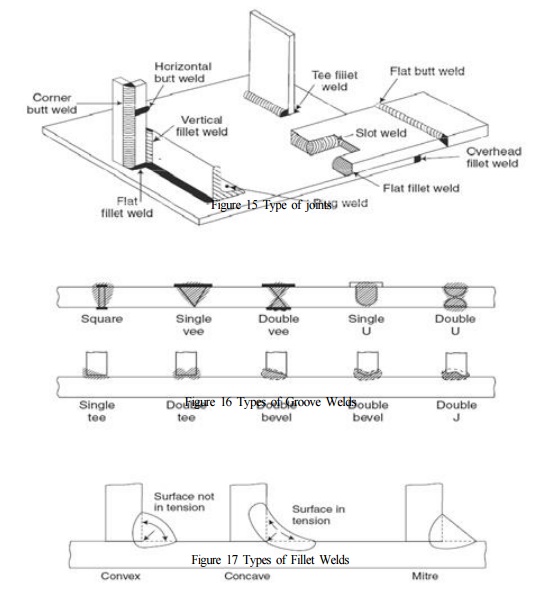Chapter: civil : Design Of Steel Structures
Types Of Welded Connections

WELDED
CONNECCTION
INTRODUCTION
When two members are connected by
means of welds, such a connection is known as welded connection. Welding offers
an opportunity to the designer to achieve a more efficient use of the
materials. Earlier designers considered welds as less fatigue resistant. It was
believed that attaining good welds at site is impossible. Now a day, with the
advances in the field of non destructive testing methods (NDT), testing and
quality control of welds became easier. This gives the designers enough courage
to explore the possibilities and capabilities of welded connections. Speedy
construction is facilitated by using welded connections. Weight of welded
connections is relatively low and hence cuts cost of construction. Since there
is no reduction of holes the gross cross section is effective in carrying
loads.
TYPES OF WELDED CONNECTIONS
The basic types of welded joints
can be classified depending on the types of welds, position of welds and type
of joint.
1. Based
on the type of weld
Based on type of weld, welds can be classified in
to fillet weld, groove weld (or butt weld), plug weld, slot weld, spot weld
etc. Various types of welds are shown in Figure 15.
1.1.
Groove welds (butt welds)
Groove welds (butt welds) and
fillet welds are provided when the members to be joined are lined up. Groove
welds are costlier since it requires edge preparation. Groove welds can be
employed safely in heavily stressed members. Square butt welds are provided up
to a plate thickness of 8mm only. Various types of butt welds are shown in
Figure 16.
1.2.
Fillet welds
Fillet welds are provided when
two members to be jointed are in different planes. Since this situation occurs
more frequently, fillet welds are more common than butt welds. Fillet welds are
easier to make as it requires less surface preparation. Nevertheless, they are
not as strong as the groove welds and cause concentration of stress. Fillet
welds are preferred in lightly stressed members where stiffness rather than
strength governs the design. The various types of fillet welds are shown in
Figure 17.
1.3. Slot
and plug welds
Slot and plug welds are used to
supplement fillet welds where the required length of fillet weld cannot be
achieved.
2. Based
on the position of weld
Based on the position of weld,
welds can be classified in to flat weld, horizontal weld, vertical weld,
overhead well etc.
Based on
the type of joints
Based on
the type of joints, welds can be classified in to butt welded joints, lap
welded joints, tee welded joints and corner welded joints.
Related Topics